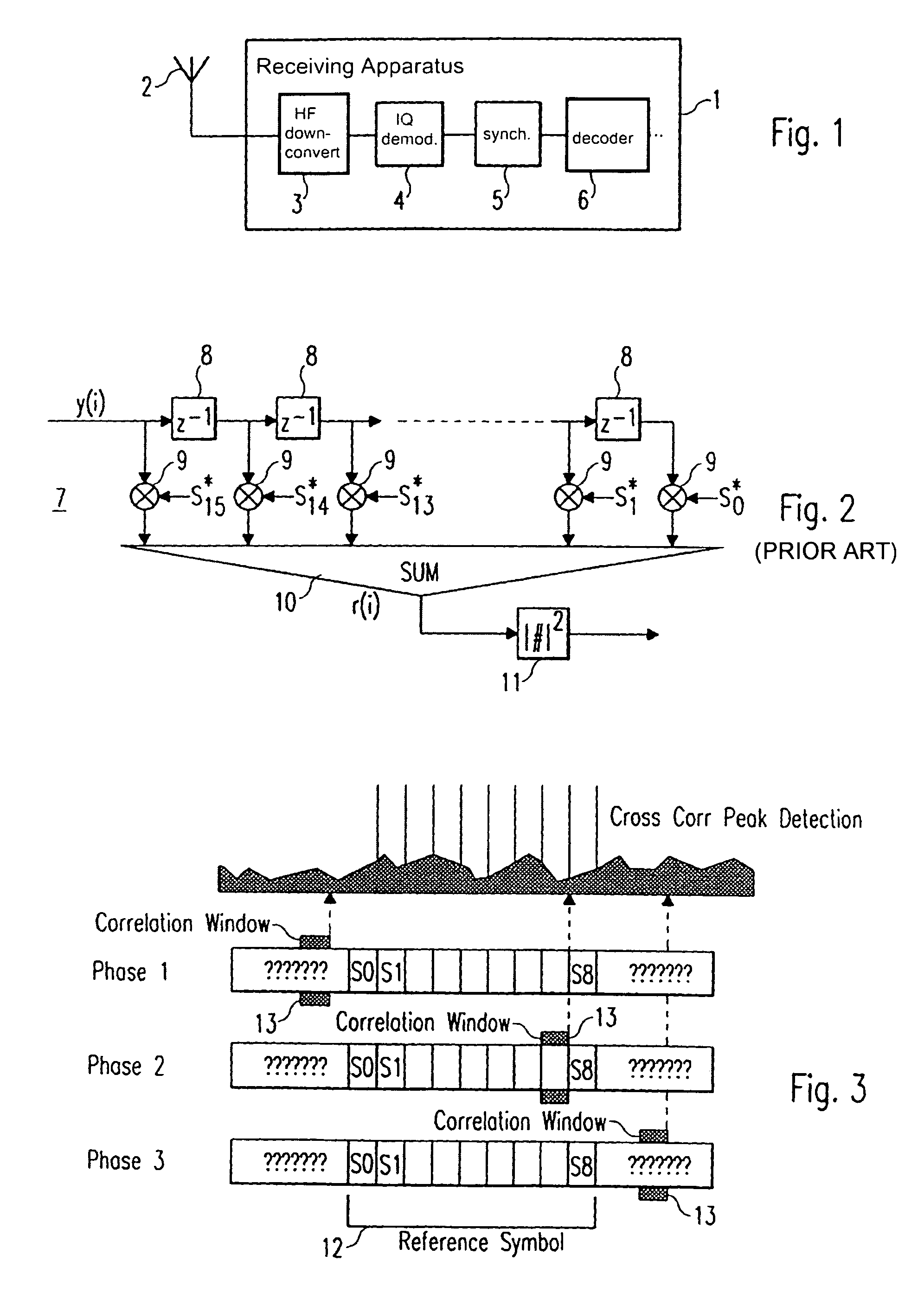Receiving apparatus and synchronizing method for a digital telecommunication system
a technology of receiving apparatus and digital telecommunication system, which is applied in the direction of mechanical apparatus, synchronisation signal speed/phase control, operating means/releasing devices of valves, etc., can solve problems such as synchronization failure, and achieve the effect of improving synchronization performance and accuracy
- Summary
- Abstract
- Description
- Claims
- Application Information
AI Technical Summary
Benefits of technology
Problems solved by technology
Method used
Image
Examples
first embodiment
[0044]In FIG. 6, a cross correlation means 16 and a detection means 19 are shown, which can be implemented in a synchronising means 5 of a receiving apparatus 1 of the present invention, the general structure of which is shown in FIG. 1. The structure of the cross correlation means 16 is identical to the structure of the cross correlation means 7 shown in FIG. 2, so that a detailed explanation is omitted. The cross correlation means 16 comprises 15 delay means 17 and 16 multiplication means 18 as well as a sum means for adding the outputs of the multiplication means 18. The cross correlation window length of the cross correlation means 16 corresponds to the length of one repetition pattern, which is e.g. 16 samples. A received data stream of 16 samples is cross correlated with complex conjugated samples of an expected repetition pattern stored in the receiving apparatus 1. The output signal r(i) of the sum means, i.e. the output signal of the cross correlation means 16 is supplied t...
second embodiment
[0051]In FIG. 11, a cross correlation means 24 is shown, which can be implemented in a synchronising means 5 of a receiving apparatus 1 of the present invention, a general structure of which is e.g. shown in FIG. 1.
[0052]The cross correlation means 24 essentially has the same structure as the cross correlation means 16 shown in FIG. 6 and the cross correlation means 7 shown in FIG. 2. The main difference is, that the cross correlation means 24 shown in FIG. 11 has a cross correlation window length of two repetition patterns, which in the shown example corresponds to 32 samples, when the structure of the reference symbol shown in FIG. 4 is assumed. Thereby, the cross correlation means 24 comprises 31 delay means 25, which are arranged serially and respectively cause a delay of one sample. Further, the cross correlation means 24 comprises 32 multiplication means, which multiply the respective (delayed) samples of the received signal y(i) with stored positive and negative complex conju...
PUM
 Login to View More
Login to View More Abstract
Description
Claims
Application Information
 Login to View More
Login to View More - R&D
- Intellectual Property
- Life Sciences
- Materials
- Tech Scout
- Unparalleled Data Quality
- Higher Quality Content
- 60% Fewer Hallucinations
Browse by: Latest US Patents, China's latest patents, Technical Efficacy Thesaurus, Application Domain, Technology Topic, Popular Technical Reports.
© 2025 PatSnap. All rights reserved.Legal|Privacy policy|Modern Slavery Act Transparency Statement|Sitemap|About US| Contact US: help@patsnap.com



